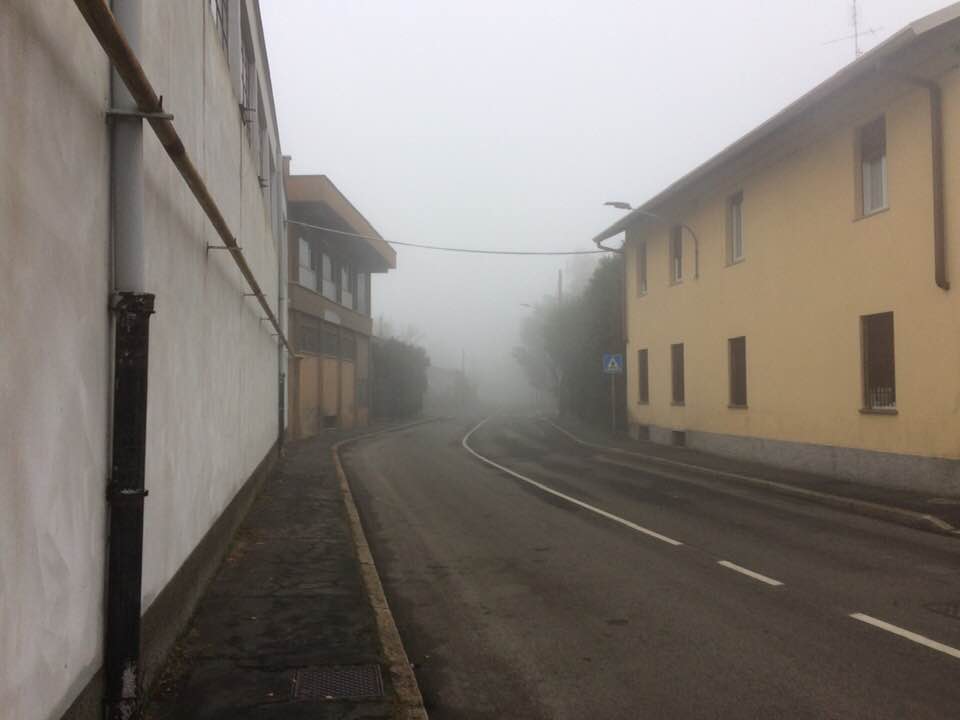|
San Giorgio Su Legnano
San Giorgio su Legnano (Legnanese dialect, Legnanese: ) is a ''comune'' (municipality) in the Metropolitan City of Milan in the Italy, Italian region Lombardy, located about northwest of Milan. San Giorgio su Legnano borders the following municipalities: Legnano, Villa Cortese, Canegrate, Busto Garolfo. It is located in the Po Valley northwest of Milan, from which it is 34 km away, near the valley in which the Olona river flows. Located slightly higher than the neighbouring Legnano (hence the preposition "su", en. "up", in the name), it is one of the smaller municipalities in the metropolitan city of Milan. Since 1957, the town has hosted the annual Campaccio competition, a cross country running event which attracts world class athletes.3 STELLE CHE ILLUMINANO IL CAMPACCIO Un ... [...More Info...] [...Related Items...] OR: [Wikipedia] [Google] [Baidu] |
Lombardy
The Lombardy Region (; ) is an administrative regions of Italy, region of Italy that covers ; it is located in northern Italy and has a population of about 10 million people, constituting more than one-sixth of Italy's population. Lombardy is located between the Alps mountain range and tributaries of the river Po (river), Po, and includes Milan, its capital, the largest metropolitan area in the country, and among the largest in the EU. Its territory is divided into 1,502 ''comuni'' (the region with the largest number of ''comuni'' in the entire national territory), distributed among twelve administrative subdivisions (eleven Provinces of Italy, provinces plus the Metropolitan City of Milan). The region ranks first in Italy in terms of population, population density, and number of local authorities, while it is fourth in terms of surface area, after Sicily, Piedmont, and Sardinia. It is the second-most populous Region (Europe), region of the European Union (EU), and the List of ... [...More Info...] [...Related Items...] OR: [Wikipedia] [Google] [Baidu] |
Moraine
A moraine is any accumulation of unconsolidated debris (regolith and Rock (geology), rock), sometimes referred to as glacial till, that occurs in both currently and formerly glaciated regions, and that has been previously carried along by a glacier or ice sheet. It may consist of partly rounded particles ranging in size from boulders (in which case it is often referred to as boulder clay) down to gravel and sand, in a groundmass of finely-divided clayey material sometimes called glacial flour. Lateral moraines are those formed at the side of the ice flow, and terminal moraines are those formed at the foot, marking the maximum advance of the glacier. Other types of moraine include ground moraines (till-covered areas forming sheets on flat or irregular topography) and medial moraines (moraines formed where two glaciers meet). Etymology The word ''moraine'' is borrowed from French language, French , which in turn is derived from the Savoyard dialect, Savoyard Italian ('mound of e ... [...More Info...] [...Related Items...] OR: [Wikipedia] [Google] [Baidu] |
Financial Crisis
A financial crisis is any of a broad variety of situations in which some financial assets suddenly lose a large part of their nominal value. In the 19th and early 20th centuries, many financial crises were associated with Bank run#Systemic banking crises, banking panics, and many recessions coincided with these panics. Other situations that are often called financial crises include stock market crashes and the bursting of other financial Economic bubble, bubbles, currency crisis, currency crises, and sovereign defaults. Financial crises directly result in a loss of paper wealth but do not necessarily result in significant changes in the real economy (for example, the crisis resulting from the famous tulip mania bubble in the 17th century). Many economists have offered theories about how financial crises develop and how they could be prevented. There is little consensus and financial crises continue to occur from time to time. It is apparent however that a consistent feature of bo ... [...More Info...] [...Related Items...] OR: [Wikipedia] [Google] [Baidu] |
Industrial Sector
In macroeconomics, the secondary sector of the economy is an economic sector in the three-sector theory that describes the role of manufacturing. It encompasses industries that produce a finished, usable product or are involved in construction. This sector generally takes the output of the primary sector (i.e. raw materials like metals, wood) and creates finished goods suitable for sale to domestic businesses or consumers and for export (via distribution through the tertiary sector). Many of these industries consume large quantities of energy, require factories and use machinery; they are often classified as light or heavy based on such quantities. This also produces waste materials and waste heat that may cause environmental problems or pollution (see negative externalities). Examples include textile production, car manufacturing, and handicraft. Manufacturing is an important activity in promoting economic growth and development. Nations that export manufac ... [...More Info...] [...Related Items...] OR: [Wikipedia] [Google] [Baidu] |
Urbanization
Urbanization (or urbanisation in British English) is the population shift from Rural area, rural to urban areas, the corresponding decrease in the proportion of people living in rural areas, and the ways in which societies adapt to this change. It can also mean population growth in urban areas instead of rural ones. It is predominantly the process by which towns and City, cities are formed and become larger as more people begin to live and work in central areas. Although the two concepts are sometimes used interchangeably, urbanization should be distinguished from Urban sprawl, urban growth. Urbanization refers to the ''proportion'' of the total national population living in areas classified as urban, whereas urban growth strictly refers to the ''absolute'' number of people living in those areas. It is predicted that by 2050, about 64% of the developing world and 86% of the developed world will be urbanized. This is predicted to generate artificial scarcities of land, lack of dr ... [...More Info...] [...Related Items...] OR: [Wikipedia] [Google] [Baidu] |
Old Town
In a city or town, the old town is its historic or original core. Although the city is usually larger in its present form, many cities have redesignated this part of the city to commemorate its origins. In some cases, newer developments on the periphery of the original settlement may have become the town's principal commercial and/or residential hub, leaving the historic "old town" as a secondary focus. There are many places throughout the world referred to as the ''old town'' (sometimes construed as a proper noun and capitalized). This is a list of some famous old towns: Africa Algeria * Casbah of Algiers, UNESCO World Heritage Site * Old Town of Constantine, Algeria, Constantine * Old Town of Oran * Old Béjaïa * Old Tlemcen Egypt * Islamic Cairo, Medieval Cairo, in Cairo, UNESCO World Heritage Site * Rosetta, Old Rashid * Old Town of Alexandria Ethiopia * Old Town of Harar, UNESCO World Heritage Site Ivory Coast * Grand-Bassam, Historic Town of Grand-Bassam, UNE ... [...More Info...] [...Related Items...] OR: [Wikipedia] [Google] [Baidu] |
Seismic Hazard
A seismic hazard is the probability that an earthquake will occur in a given geographic area, within a given window of time, and with ground motion intensity exceeding a given threshold. With a hazard thus estimated, risk can be assessed and included in such areas as building codes for standard buildings, designing larger buildings and infrastructure projects, land use planning and determining insurance rates. The seismic hazard studies also may generate two standard measures of anticipated ground motion, both confusingly abbreviated MCE; the simpler probabilistic Maximum Considered Earthquake (or Event ), used in standard building codes, and the more detailed and deterministic Maximum Credible Earthquake incorporated in the design of larger buildings and civil infrastructure like dams or bridges. It is important to clarify which MCE is being discussed. Calculations for determining seismic hazard were first formulated by C. Allin Cornell in 1968 and, depending on their level of ... [...More Info...] [...Related Items...] OR: [Wikipedia] [Google] [Baidu] |
Above Sea Level
Height above mean sea level is a measure of a location's vertical distance (height, elevation or altitude) in reference to a vertical datum based on a historic mean sea level. In geodesy, it is formalized as orthometric height. The zero level varies in different countries due to different reference points and historic measurement periods. Climate change and other forces can cause sea levels and elevations to vary over time. Uses Elevation or altitude above sea level is a standard measurement for: * Geographic locations such as towns, mountains and other landmarks. * The top of buildings and other structures. * Mining infrastructure, particularly underground. * Flying objects such as airplanes or helicopters below a Transition Altitude defined by local regulations. Units and abbreviations Elevation or altitude is generally expressed as "metres above mean sea level" in the metric system, or " feet above mean sea level" in United States customary and imperial units. Com ... [...More Info...] [...Related Items...] OR: [Wikipedia] [Google] [Baidu] |
Moorland
Moorland or moor is a type of Habitat (ecology), habitat found in upland (geology), upland areas in temperate grasslands, savannas, and shrublands and the biomes of montane grasslands and shrublands, characterised by low-growing vegetation on Soil pH, acidic soils. Moorland today generally means uncultivated hill land (such as Dartmoor in South West England), but also includes low-lying wetlands (such as Sedgemoor, also South West England). It is closely related to heath, although experts disagree on the exact distinction between these types of vegetation. Generally, moor refers to Highland (geography), highland and high rainfall areas, while heath refers to lowland zones which are more likely to be the result of human activity. Moorland habitats are found mainly in Tropics, tropical Africa, Northern Europe, northern and western Europe, and South America. Most of the world's moorlands are diverse ecosystems. In the extensive moorlands of the tropics, biodiversity can be extremely ... [...More Info...] [...Related Items...] OR: [Wikipedia] [Google] [Baidu] |
Humus
In classical soil science, humus is the dark organic matter in soil that is formed by the decomposition of plant and animal matter. It is a kind of soil organic matter. It is rich in nutrients and retains moisture in the soil. Humus is the Latin word for "earth" or "ground". In agriculture, "humus" sometimes also is used to describe mature or natural compost extracted from a woodland or other spontaneous source for use as a soil conditioner. It is also used to describe a topsoil horizon that contains organic matter (''humus type'', ''humus form'', or ''humus profile''). Humus has many nutrients that improve the health of soil, nitrogen being the most important. The ratio of carbon to nitrogen ( C:N) of humus commonly ranges between 8:1 and 15:1 with the median being about 12:1. It also significantly improves (decreases) the bulk density of soil. Humus is amorphous and lacks the cellular structure characteristic of organisms. The solid residue of sewage sludge treatment, w ... [...More Info...] [...Related Items...] OR: [Wikipedia] [Google] [Baidu] |
Clay
Clay is a type of fine-grained natural soil material containing clay minerals (hydrous aluminium phyllosilicates, e.g. kaolinite, ). Most pure clay minerals are white or light-coloured, but natural clays show a variety of colours from impurities, such as a reddish or brownish colour from small amounts of iron oxide. Clays develop plasticity (physics), plasticity when wet but can be hardened through Pottery#Firing, firing. Clay is the longest-known ceramic material. Prehistoric humans discovered the useful properties of clay and used it for making pottery. Some of the earliest pottery shards have been radiocarbon dating, dated to around 14,000 BCE, and Clay tablet, clay tablets were the first known writing medium. Clay is used in many modern industrial processes, such as paper making, cement production, and chemical filtration, filtering. Between one-half and two-thirds of the world's population live or work in buildings made with clay, often baked into brick, as an essenti ... [...More Info...] [...Related Items...] OR: [Wikipedia] [Google] [Baidu] |
Sand
Sand is a granular material composed of finely divided mineral particles. Sand has various compositions but is usually defined by its grain size. Sand grains are smaller than gravel and coarser than silt. Sand can also refer to a textural class of soil or soil type; i.e., a soil containing more than 85 percent sand-sized particles by mass. The composition of sand varies, depending on the local rock sources and conditions, but the most common constituent of sand in inland continental settings and non-tropical coastal settings is silica (silicon dioxide, or SiO2), usually in the form of quartz. Calcium carbonate is the second most common type of sand. One such example of this is aragonite, which has been created over the past 500million years by various forms of life, such as coral and shellfish. It is the primary form of sand apparent in areas where reefs have dominated the ecosystem for millions of years, as in the Caribbean. Somewhat more rarely, sand may be composed ... [...More Info...] [...Related Items...] OR: [Wikipedia] [Google] [Baidu] |






